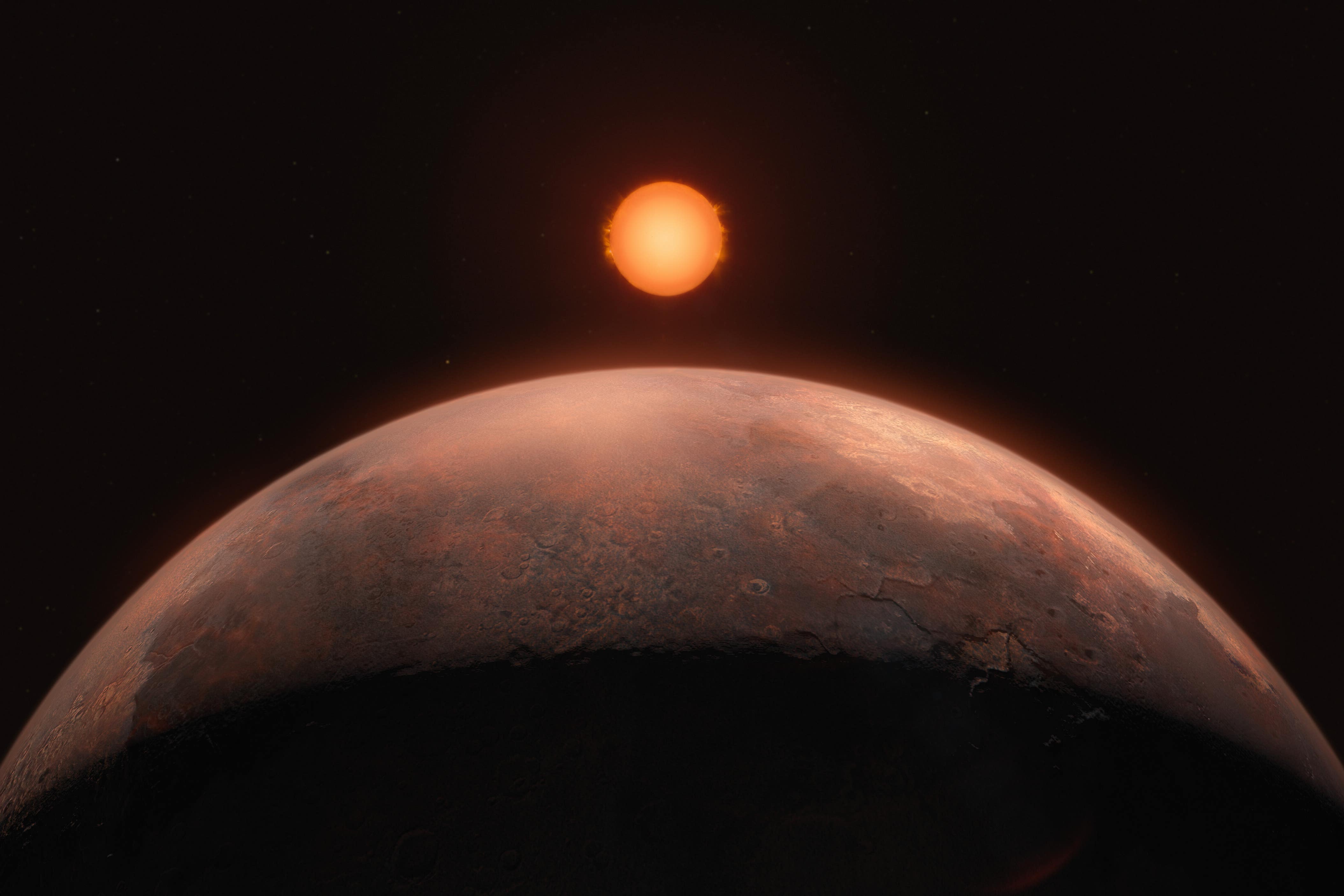Scientists find astonishing planet near to Earth
Planet is at least half as massive as Venus – and could be one of many, astronomers say

Your support helps us to tell the story
Our mission is to deliver unbiased, fact-based reporting that holds power to account and exposes the truth.
Whether $5 or $50, every contribution counts.
Support us to deliver journalism without an agenda.

Louise Thomas
Editor
A planet has been found around the closest single star to us.
The planet orbits around Barnard’s star and has been given the name Barnard b. It could be one of a number of planets waiting to be found around that nearby sun.
It was spotted using the the European Southern Observatory’s Very Large Telescope (ESO’s VLT).
The newly-discovered planet – called Barnard b – has at least half the mass of Venus and on it a year lasts slightly more than three Earth days.
The findings also suggest there may be three more exoplanet candidates, in various orbits around the star.
Barnard’s star is six light-years away from Earth and is the second-closest stellar system – after Alpha Centauri’s three-star group – and the closest individual star to us.
Because of how close it is, it is a primary target in the search for Earth-like exoplanets.
No planet orbiting Barnard’s star had been confirmed until now.
Jonay Gonzalez Hernandez, a researcher at the Instituto de Astrofisica de Canarias in Spain, and lead author of the paper, said: “Even if it took a long time, we were always confident that we could find something.”
In the study, researchers were looking for signals from possible exoplanets within the habitable or temperate zone of Barnard’s star — the range where liquid water can exist on the planet’s surface.
Barnard b is twenty times closer to its star than Mercury is to the Sun.
It orbits its star in 3.15 Earth days and has a surface temperature around 125C.
Mr Gonzalez Hernandez said: “Barnard b is one of the lowest-mass exoplanets known and one of the few known with a mass less than that of Earth.
“But the planet is too close to the host star, closer than the habitable zone.
“Even if the star is about 2,500 degrees cooler than our Sun, it is too hot there to maintain liquid water on the surface.”
The findings, published in the journal Astronomy and Astrophysics, are the result of observations made over the last five years with ESO’s VLT, located at Paranal Observatory in Chile.
Additional reporting by agencies